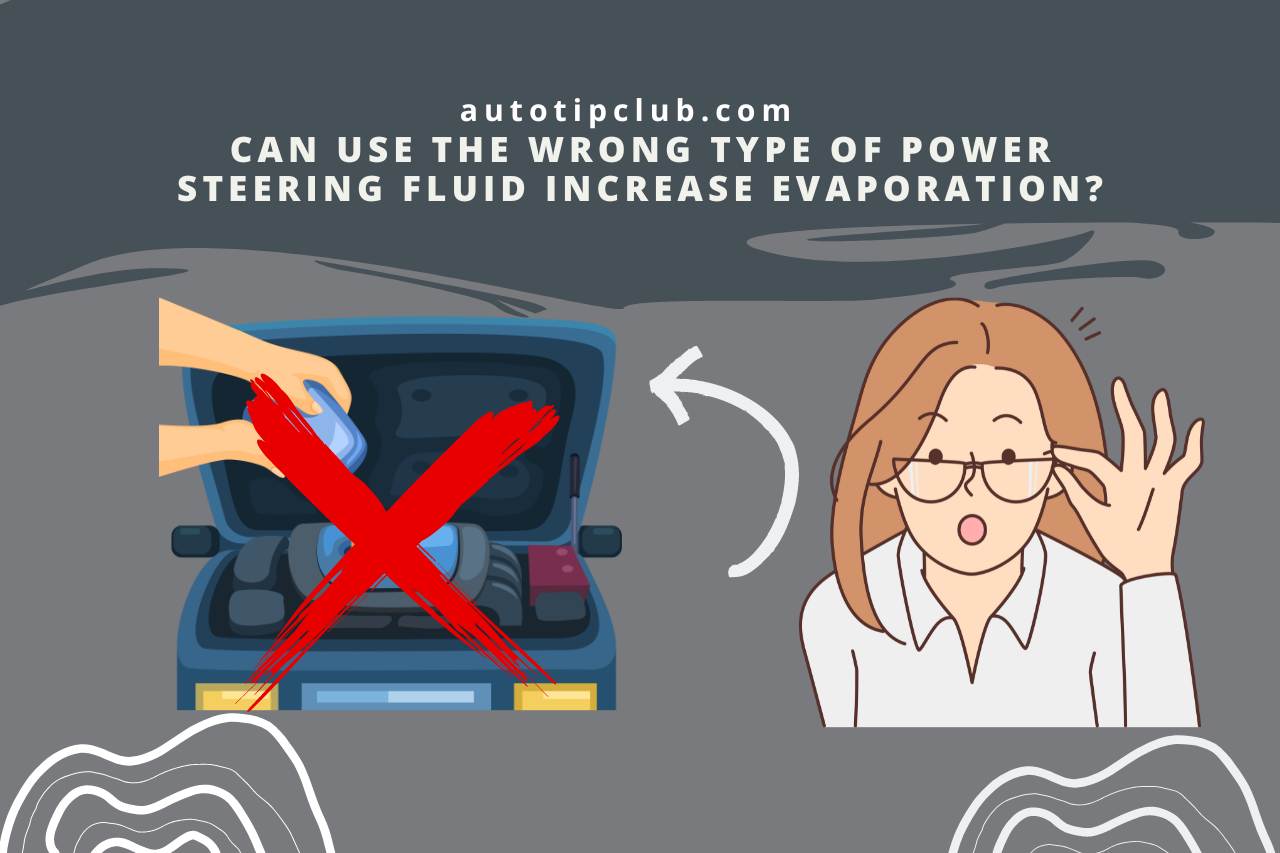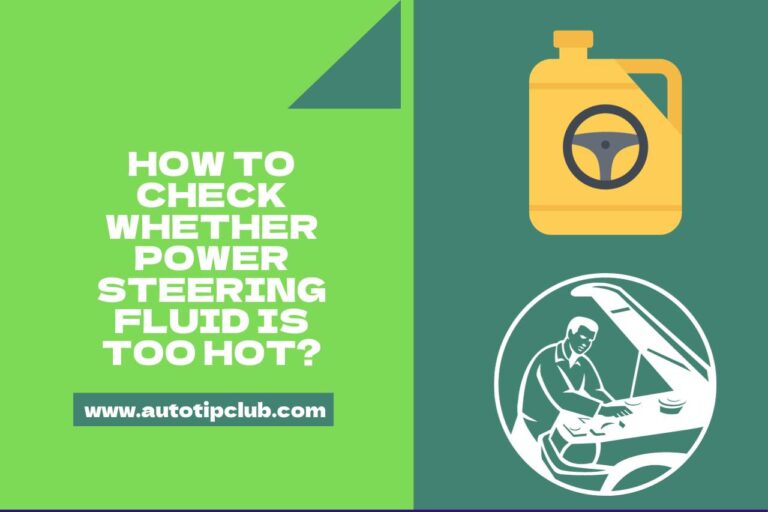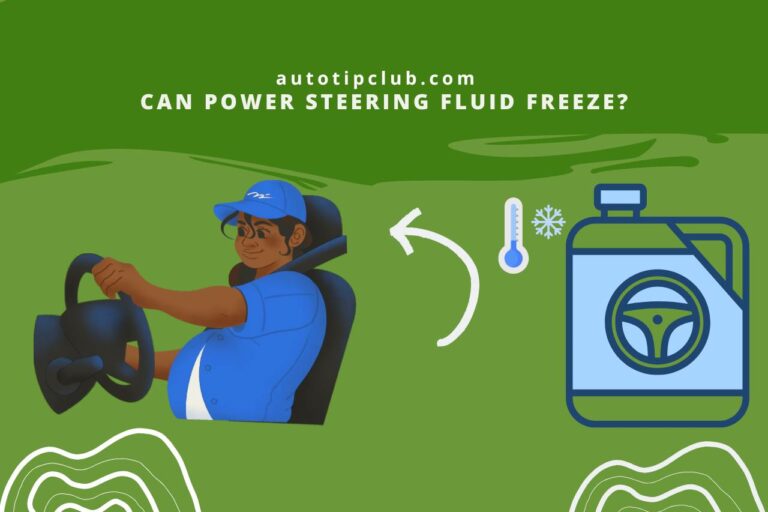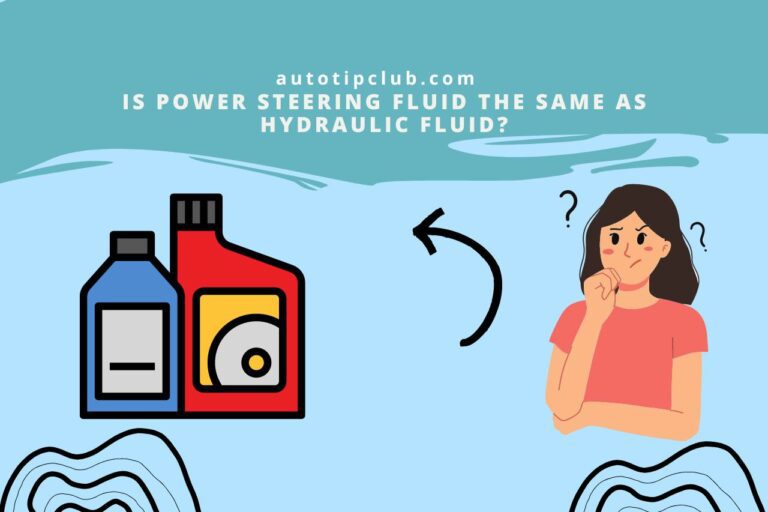Does Power Steering Fluid Evaporate? Unveiling the Truth!
Power steering fluid is an essential component of a vehicle’s power steering system for providing hydraulic assistance in steering. It undergoes various temperature changes and experiences mechanical stress as the fluid circulates through the system. As a result, some power steering fluid evaporation may occur over time. Power steering fluid evaporates less frequently than other vehicle fluids like engine oil or coolant. It is to guarantee a fluid loss is minimized and systems for power steering are sealed. Regular maintenance, which includes checking the fluid level and topping it off, if necessary, guarantees optimum performance and makes up for any slight evaporation that may happen. Let’s explore more about this topic in this article.
Does Power Steering Fluid Evaporate?
The answer is yes. Power steering fluid can evaporate, but only at the temperature where it can ignite or at its flashpoint. Because the power steering fluid has a high flashpoint, it is less likely to start a fire.
If the temperature reaches the evaporation point in hot surroundings, the power steering fluid can be a secondary cause of a fire.
When power steering fluid evaporates, it can decrease the fluid level, potentially causing issues with the power steering system’s performance.
Important to frequently check the fluid level and fix any leaks or evaporation to guarantee the power steering system is operating properly.
What Are the Common Components of Power Steering Fluid That Affect Evaporation?
Power steering fluid does not evaporate like gasoline. It is a common misconception to mistake the presence of bubbles or foam in the power steering reservoir for evaporation.
Power steering fluid does not evaporate. which causes a liquid to transform into a gas; instead, it stays liquid. As a result, leaks in the system are frequently caused if the power steering fluid level drops.
Regular use of the power steering system should not cause the fluid level to go low unless there is a leak.
If you notice the need to top up the power steering fluid repeatedly, it is important to diagnose and address any leaks promptly to prevent further issues.
How Do Temperature and Environmental Conditions Impact Power Steering Fluid Evaporation?
Temperature and environmental conditions can impact power steering fluid evaporation. Higher temperatures can accelerate evaporation, causing the power steering fluid to evaporate more quickly.
It can result in a decrease in fluid level and potentially affect the performance of the power steering system.
Extreme environmental conditions like excessive heat or prolonged exposure to direct sunlight can contribute to fluid evaporation.
Important to periodically check the fluid level, especially in hot climes or during times of high temperature, and fix any leaks or fluid loss promptly to ensure optimum power steering system performance.
Can Power Steering Fluid Levels Decrease Due to Evaporation?
Power steering fluid levels do not decrease due to evaporation like gasoline. Power steering fluid can break down and lose its effectiveness over time.
Evaporation, which is the process of a liquid changing into a gas and does not happen with a power steering fluid, might be confused with foam production in the fluid.
Important to address issues of foam or bubbles in the power steering reservoir by identifying and resolving the underlying causes to maintain the proper functioning of the power steering system.
What Are the Signs of Low Power Steering Fluid Caused by Evaporation?
Signs of low-power steering fluid caused by evaporation can manifest in various ways. Difficulty turning the wheel is a common symptom, making the steering harder to maneuver.
Noise can occur while turning the steering wheel or during its operation. The steering wheel may feel jerky, rough, or lacking smoothness during turns. Leaky fluid may also be observed, indicating a decrease in the fluid level.
Sometimes the steering wheel may lock, making it challenging to turn. These signs indicate a potential issue with low-power steering fluid, whether it is due to evaporation or other causes, and prompt attention should be given to address the fluid level and maintain proper steering functionality.
Does the Evaporation of Power Steering Fluid Affect the System’s Performance?
The evaporation of the power steering fluid itself does not directly affect the system’s performance. Power steering fluid can break down and deteriorate, reducing effectiveness over time.
If old power steering fluid is continuously used, foam may form within it, compromising its lubricating and hydraulic properties.
It can result in decreased performance of the power steering system, causing issues like increased steering effort, noise, or jerky steering.
It is important to recognize that the presence of bubbles or foam in the power steering reservoir does not result from evaporation.
Still, it indicates other problems that should be addressed to maintain the optimal performance of the power steering system.
Can Frequent Driving or High Temperatures Accelerate Power Steering Fluid Evaporation?
The answer is yes. Frequent driving or high temperatures can accelerate power steering fluid evaporation. The evaporation rate can be accelerated by higher temperatures hastening the evaporation of the power steering fluid.
Frequent driving can also contribute to fluid evaporation as the system generates heat during operation.
The important thing is to note the power steering fluid does not evaporate at its flashpoint, which is the temperature at which it can ignite.
Instead, power steering fluid can be considered combustible rather than flammable, and extreme heat can increase the risk of it becoming a secondary cause of a fire if the surroundings reach the evaporation point.
Can You Mix Different Brands of Power Steering Fluid to Reduce Evaporation?
The answer is no. Not recommended to mix different brands of power steering fluid. Mixing two different power steering fluid types can damage the car steering system.
Each brand of power steering fluid may have different additive properties and quantities specifically formulated for optimal performance in the power steering system.
Mixing different brands can disrupt this balance and compromise the smooth functioning of the power steering system. Best to use the recommended power steering fluid specified by the vehicle manufacturer.



Can Use the Wrong Type of Power Steering Fluid Increase Evaporation?
Using the wrong type of power steering fluid can cause damage to the power steering system, but it does not directly increase evaporation.
Power steering fluid does not evaporate like gasoline. Important to use the right type of power steering fluid as recommended by the car manufacturer to guarantee the power steering system is properly lubricated, safeguarded, and performs as intended.
Although using the incorrect fluid may result in insufficient lubrication and system damage. It does not affect the fluid’s ability to evaporate.
What Steps Should You Take to Prevent Excessive Evaporation of Power Steering Fluid?
Follow these steps to prevent excessive evaporation of power steering fluid.
- Maintain a Sufficient Fluid Level – To ensure enough fluid is in the power steering fluid reservoir to cover the hose inlets. It aids in sealing the system and keeps air from entering, which can cause more evaporation.
- Add New Fluid – Fill the reservoir with new power steering fluid if it is low. Use the recommended fluid type the vehicle’s manufacturer has stated to ensure compatibility and best performance.
- Run the Engine – Start the motor and let it run for a while. It enables any remaining old or contaminated fluid to be replaced by fresh fluid as it circulates throughout the power steering system.
- Turn the Steering Wheel in Both Directions – While the engine is running, make a few full turns to the left and then a few full turns to the right. The fresh fluid is more evenly distributed, and any air pockets or bubbles are eliminated by doing this.
- If Needed, Repeat the Process – Examine the fluid level and quality after turning the engine off. Repeat steps 2 through 4 as necessary to make the fluid in the reservoir appear clean and impurity-free if it appears polluted or unclean.
You May Also Like
- Can you Mix Power Steering Fluid? (Risks, Benefits & Best Practices)
- What “Service Power Steering” Message Means: Troubleshooting
- How Far Can I Drive on Low Transmission Fluid? Estimating Your Driving Range!
- The Truth About Transmission Fluid: Does It Expire?
- Can you Drive without Power Steering? Unveiling the Truth!
- Is Power Steering Fluid Flammable? Debunking Myths!
- Is Power Steering Fluid the Same as Hydraulic Fluid? Exploring the Distinctions!
- Is Power Steering Fluid Corrosive? Debunking Corrosion Concerns!
- Can Power Steering Fluid Freeze? Understanding the Impact!



My name is Robot McCullum, and I’m an Automotive Engineer with 20+ years of experience in the automotive field. I’ll give you step-by-step instructions for recognizing and fixing complicated technical problems in an uncomplicated manner. www.AutoTipClub.com, is your best resource for in-depth tutorials, insightful tips, and practical advice designed and developed either for seasoned vehicle collectors or daily drivers.







